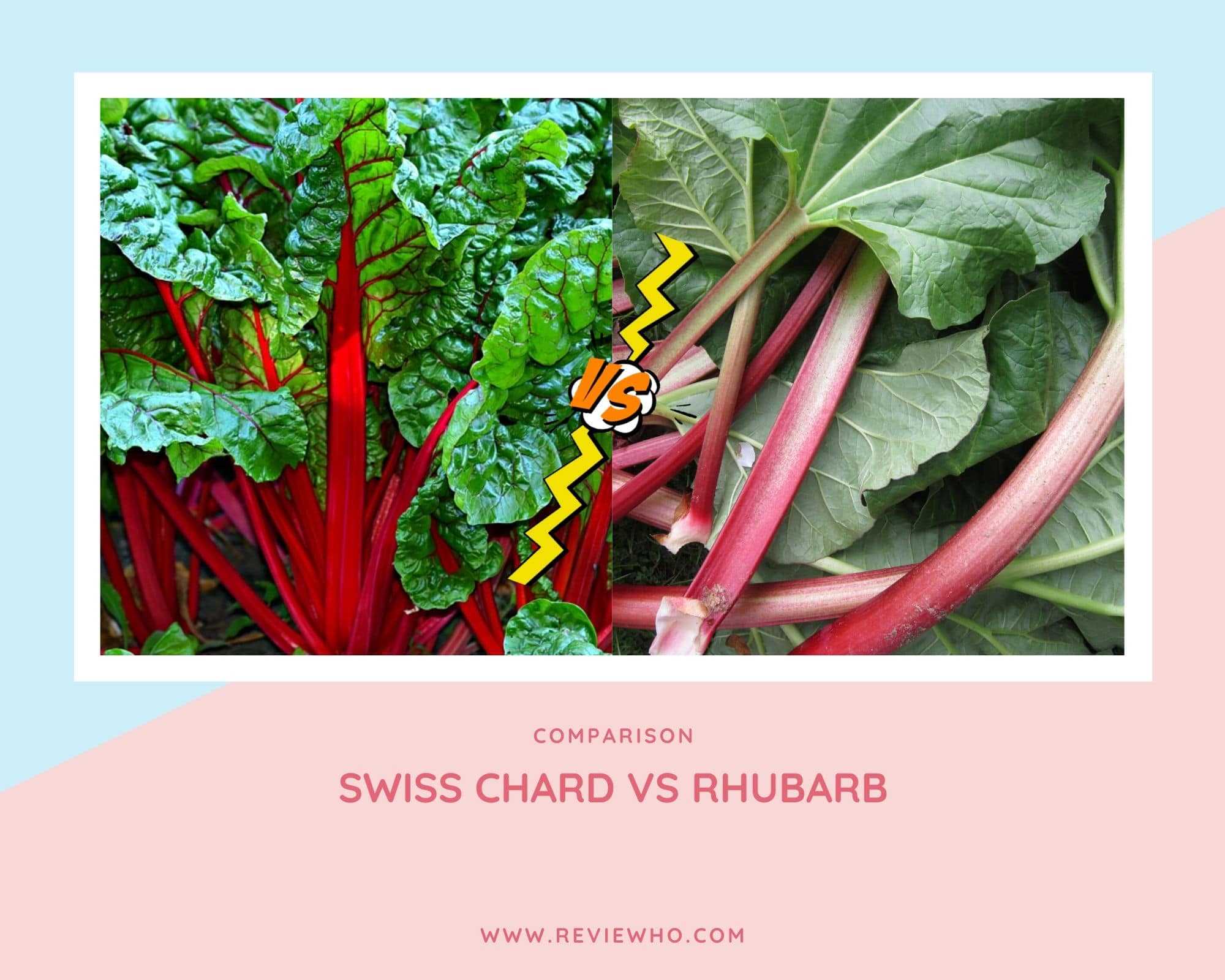Swiss chard and rhubarb are similar in that they are both leafy with red stalks. However, there is a significant amount of difference between the two of these. So, is Swiss chard the same as rhubarb? This post brings out the rhubarb vs. chard differences.
The Definitions

A rhubarb is any of a variety of plants that belong to the buckwheat family, genus Rheum. Some of the plants have medicinal rhizomes. Others have edible stalks. Cooks use the stalks in the R. rhabarbarum to create pies.

The Swiss chard, on the other hand, has leafstalks and leaves that can be used in meals, as a vegetable.
Detailed Information
The definitions do not really provide a detailed difference between the two.
Several varieties of the Swiss chard are available, but some are unique and cannot be confused with the rhubarb. However, the ruby red and the rainbow varieties are easily mistaken for rhubarb. The ruby-red variety always has a red color, while the rainbow variety sometimes has a red color.
The Swiss chard is darker and the leaves have more veins, similar to spinach.
The rhubarb, on the other hand, does not have a green color that is as vibrant as Swiss chard. In addition, it cannot be ingested. One similarity that comes up in the Swiss chard vs. rhubarb comparison is that they both have oxalic acid. However, the oxalic acid in the leaves of a rhubarb is so high that it can become fatal.
In regards to the taste, the rhubarb has an acidic and tart taste. For that reason, it is mainly coupled with sweeter fruit, when included in a pie. The Swiss chard, on the other hand, tastes much better with an earthy and meaty taste.
Conclusion
The Swiss chard is highly nutritious and comes out as one of the vegetables with the highest levels of minerals and vitamins A, E, C, and K. It also has calcium, magnesium, anti-inflammatory enzymes, as well as antioxidants.
More Comparisons:
Feel free to share your observations with me in the comments section!
Also, if you find the information in this post to be useful, be sure to share this post with your friends on Facebook, Twitter, and Pinterest!




